New Microsoft Cloud Partner Program: Rodney Clark’s 10 Boldest Statements
'The Microsoft Cloud (Partner) Program is for all partners in our ecosystem, whether they build and sell services, software solutions or whether or not they're focused on devices,’ Rodney Clark, Microsoft’s corporate vice president of global channel sales and channel chief, says.
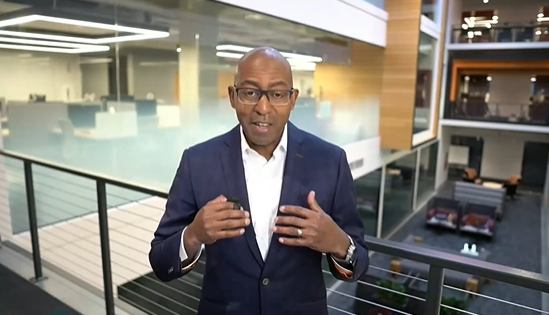
A renamed Microsoft partner program and changes to the tiers partners can achieve come in response to customer buying habits and Microsoft efforts to drive more partner success, two Microsoft channel executives said Wednesday during a virtual event.
Rodney Clark, Microsoft’s corporate vice president of global channel sales and channel chief, said that the changes to Microsoft Partner Network – now dubbed the Microsoft Cloud Partner Program – seek to help members of Microsoft’s 400,000 partner ecosystem make changes seen in the fastest growing partners.
Those changes include becoming more digital, leveraging marketplaces, co-selling with Microsoft and engaging with peers.
“The Microsoft Cloud Partner Program is an evolution of our Microsoft Partner Network and focuses on driving Microsoft Cloud value through each and every partner in our ecosystem,” Clark said. “The Microsoft Cloud (Partner) Program is for all partners in our ecosystem, whether they build and sell services, software solutions or whether or not they're focused on devices.”
[RELATED: Channel Chief Rodney Clark Defends Microsoft 365 Licensing Model]
Nick Parker, Microsoft corporate vice president of global partner solutions, said that Microsoft has seen $28 billion in annual contracted partner co-sell value since the 2018 fiscal year, with 37 percent co-sell revenue growth.
“Our business models are the broadest for all partner business types,” Parker said. “From a partner that’s a commercial developer or ISV (independent software vendor), an IoT (internet of things) solutions provider, a system integrator, or an advisory partner – a reseller, to an OEM building devices – we provide end to end edge to cloud technology, which means endless, unique and tailored ways for partners to be profitable and successful through our channel inclusion efforts.”
He continued: “Partners make more possible. And with the technology innovation, go-to-market scale and tools for differentiation that we provide, Microsoft is the platform for growth with opportunities of bringing the edge to the cloud and delivering innovation with our partners to help customers migrate to the cloud.”
The Microsoft Cloud Partner Program changes start Oct. 3, giving partners less than seven months to make sure they qualify for the correct designations, according to the company.
Microsoft will get rid of the Gold and Silver statuses partners currently use. Instead, partners will start at a base membership and qualify as “solutions providers” if they score 70 or more points according to a partner capabilities score (PCS), also rolled out as part of the Microsoft Cloud Partner Program changes.
Partners can also qualify as “specialized” or “expert” in particular capabilities, according to Microsoft.
The Microsoft Cloud Partner Program changes come as partners continue to grapple with changes Microsoft previously announced under the New Commerce Experience (NCE) banner.
Changes under NCE include a new premium on month-to-month commitments for popular Microsoft packages – including Microsoft 365 (M365), which comprises Word, Excel, Teams, SharePoint and other applications. That monthly premium is on top of an overall price increase Microsoft announced for M365 and other popular packages.
Partners have also criticized a 72-hour window Microsoft gives for changing subscription terms before a partner and customer are locked into the terms. The 72 hours also includes weekends and holidays. It also prevents customers from changing service providers and prevents providers from changing distributors or indirect sellers – companies that include Pax8, TD Synnex and Ingram Micro, according to Microsoft.
Bobby Guerra, CEO of Jacksonville, Fla.-based Microsoft partner Axiom – a critic of parts of the New Commerce Experience who even started a petition calling for Microsoft to revoke the 20 percent premium on monthly – said that the new program changes coming as partners continue to adopt changes under NCE comes off as tone deaf.
“It seems irresponsible,” he said.
Here are some of the biggest statements Clark had to say about the changes to Microsoft’s partner program.

Customers Directing Tech Innovation
We’ve enabled partners to grow and develop their businesses in every country around the world. And to that end, we’ve got more than 400,000 partners in our ecosystem today – something we are extremely proud of.
While we delivered on this promise of customer value in the past, the reality is that this has shifted, especially in the last two to three years.
It’s no longer us, Microsoft and our (partners) leading our customers on this tech intensity journey of innovation and ongoing development.
It’s no longer Microsoft and our partners. It’s very much our customers that are directing us based on their emerging needs. And we've all witnessed this over the last couple of years.
Now while our customers are directing us, they're still very much in need of that partner touch. They’re still very much in need of that partner who has the capability to deliver on the promise of innovation.
And this creates a bond today between Microsoft and our partners that's even stronger than we’ve had in the past. And it's our ecosystem at Microsoft that has this shared outcome on ensuring that we deliver on this promise of customer value.
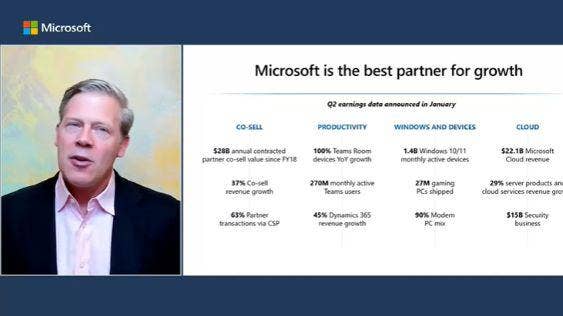
Most Successful Partners More Digital, Leverage Marketplaces
And as I was looking at the performance of our business and how we are trending, it hit me that I've got the best front row seat to one of the best control experiments ever in the history of our partner ecosystem.
What I've been witnessing is a group of partners that have been growing – growing at the average pace of cloud growth for Microsoft at about 32 percent. It’s very respectable growth. And it's something again that we’re proud of. We've invested in that and partners have responded.
I saw something interesting, however, in that there was a group of partners that were growing at about 2x our base of partners.
And when I dug a little deeper, those are the partners who had invested in specializations who had taken that next step, that next incremental step to get a bit deeper technically, to get a bit focused on Azure and infrastructure or whatever it was – they were investing in those specializations.
But then there was another interesting data set. And I'm not talking hundreds of partners here. I’m talking thousands of partners in their ecosystem that were growing at over 140 percent within our Microsoft business model.
And I thought – what's happening with those partners? We have a group that’s 2X that are invested in specializations. And then we have a group that's growing at 32 percent. All very respectable.
But when I dug into that group of partners, it was interesting in that they were invested in specializations like that group that was growing at 2x.
But they were also doing three other things that I thought were worth noting. They were more digital than the average. They were investing in marketplace – their own marketplace, they were leveraging other partners’ marketplaces or they were – most importantly – leveraging Microsoft's marketplace.
They were the most active and partner to partner engagement. They were looking to the left and to the right of them and partnering with those organizations and those entities that add complementary capabilities, adjacent capabilities, to help them win the customer.
And then the third thing is that they were the most active in our co-sell programs and engagement. So specialization, digital, engaged in marketplace, P2P (peer-to-peer) engagement, and most active in co-sell.
And they were growing definitively and distinctively at 140 percent.
So the question that I posed to Nick (Parker, Microsoft’s corporate vice president of global partner solutions) – and we had many conversations on this – is how do we turn our investments so that it gives every single partner in our ecosystem an opportunity to participate in that 140 percent growth? Well, that's what today is all about.
And that’s why today we are introducing the Microsoft Cloud Partner Program.

Six Solutions Areas
The Microsoft Cloud partner program will anchor on six solution areas – on infrastructure, on data and AI, on digital app and innovation, on business applications, on modern work and security.
Now, why is this important? Why are we making this pivot to anchor on our six solution areas? Well, the first is that this is how our customers are buying. A customer who's interested in business applications may start the conversation and journey around Power Platform and how that enables not only their business applications investment, but how it bridges from their modern work and hybrid scenario.
This is how customers are buying today – across these solution areas.
The other reason why it's important it’s how Microsoft invests in its own growth and capability. We talk about this all the time and you heard Nick reference Microsoft Cloud and you heard Nick reference solution areas, the deep investments that we're making, to better ourselves as a company and a supplier of great innovation and technology. We want to extend that to our ecosystem.
And then the third is that now it's all about helping you build the capability aligned to those two things that I mentioned previously, how customers are buying and their value proposition and how Microsoft is investing.
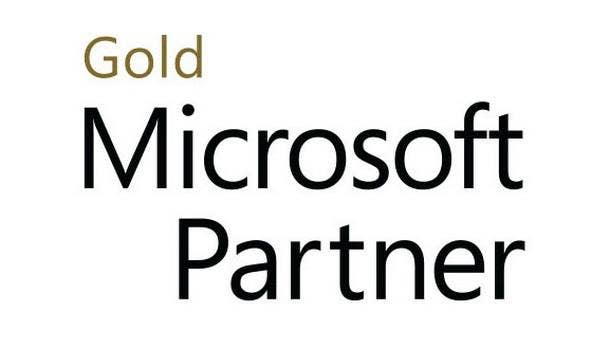
No More Gold And Silver
So with this evolution, as we move to the qualifying levels, we are retiring Gold and Silver. And as part of that we simplified what it means to be a member in our network.
We have base membership, which are open to all partners – every single partner type in our ecosystem onboards and starts their journey with the Microsoft Cloud Partner Program.
… These two qualifying levels, the first is in the solutions partner, and the next qualifying level is our specialized and expert.
The “solutions partner” is a designation that you attain, and the attestation is that you have to meet specific requirements around what we call the “partner capability score.” … This is an objective assessment across performance, customer success as well as skilling.
The second area of qualified qualification is what we call “specialized” and “expert.”
And this is a designation where you demonstrate additional technical capability, additional customer success and specific technical scenarios.
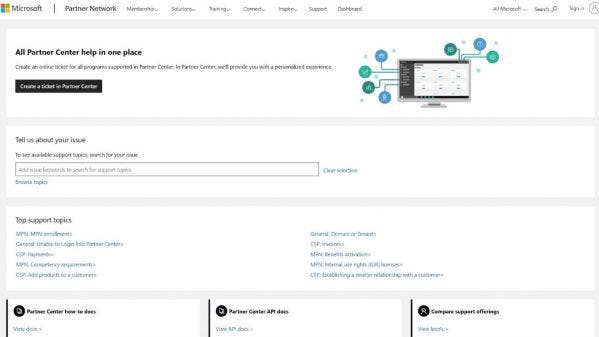
Qualifying For New Levels
What I really want to emphasize to all of us today on this call are the investments that we're making so that we help every single partner in our ecosystem to qualify for these new levels and to participate in the Microsoft Cloud Partner Program.
So the big question is, 'Hey, what is Microsoft doing to support our partners along this journey?’
It’s important to note that as part of this evolution, we’re not removing any benefits that partners received today.
In fact, we’re increasing investment in our program by more than 25 percent, a pretty significant investment, to make sure that it matches the investments that we’ve made previously in marketplace and we'll continue to make – that it matches the investments that 250 percent year over year and skilling that we talked about, at Inspire, and that it matches the ongoing investments that we’re making in co-sell.
We're not removing any benefits – we’re investing to accelerate. And as part of that investment, we're introducing new cloud products so that we have more users for cloud subscriptions available to our partners.
We have greater flexibility available to our partners to leverage and utilize Azure credits. There's additional investment on top of that for those partners who reach that specialized and expert status that gives them even more access to M365, to Viva, to Dynamics 365.
So this is a very intentional approach to ensuring that our partners – every single partner in our ecosystem – has the opportunity to grow and develop with us and evolve with us through this new program.
There's 100 points that a partner can achieve through the partner capability score. And the big question from today, through October, will be, 'Where do I stand as a partner?’
We're investing in this dashboard that takes partners directly into Partner Center and allows them to see exactly where they’re where they stand.
And then from there, we provide technical skilling if there's a gap that we need to close to help them get to 70 points, which is the minimum amount of points to qualify for the specialized partner designation.
There's proactive support to help partners navigate exactly where they need to go and how they need to invest in order to get there.
And then as always, a core benefit of our program as we make available customer facing marketing. And we'll also be investing in marketing out to our broad customer base to showcase and highlight the value that we perceive and that we will see in this new Microsoft Cloud Partner Program.
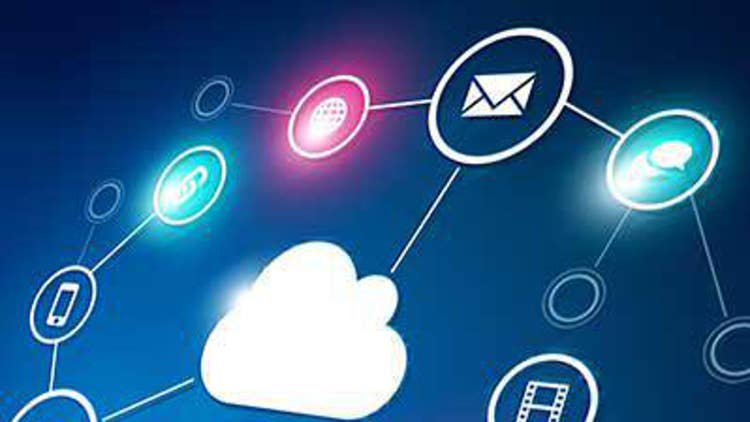
Program Changes Start Oct. 3
So let me give two key dates that are very important to understand and for all of us to make sure that we are anchored around.
March 16, today, obviously, with all of you we are announcing our Microsoft Cloud Partner Program.
The program actually starts in October – Oct. 3, specifically of this fiscal year – so we have more than six months of opportunity to help our partners in the investments that we're making, to help our partners bridge from today’s program ultimately to where we want to be in October.
And then partners will have up to 18 months. So if you think about the renewal dates that are approaching for many of our partners in our current MPN (Microsoft Partner Network) when partners get to the October timeframe, they'll have the ability to renew into the Microsoft Cloud Partner Program, or they can extend for another year through the Microsoft Partner Network.
So we are engaging with our ecosystem and giving plenty of time for our partners to understand where and how they should be investing.
So let me summarize … We're introducing the Microsoft Cloud Partner Program. We have six solution areas aligned to Microsoft Cloud, our solution partner and specialized expert will be our designation.
We will measure that through the partner capability score, and all of that will be available to our partners on a dashboard that we make available to every partner in our ecosystem today.
We're investing in your success. This is everything from an engineering investment to a benefits and program investment all the way to a go-to-market investment.
And that's the key and critical thing that I want to make sure that we all take away from today.
And then the last is we are creating an opportunity to prepare for this. This notion of six months is an opportunity for us to ensure that every single partner – every single partner in our ecosystem – who wants to be a part of and participate in this next wave of growth and value has the opportunity to do that.

Microsoft Will 'Work With Our Ecosystem’ On Customers With Credit Risk
New Commerce is a critical investment for the company and a critical investment for our ecosystem.
It's an investment that we made as a company – started more than two, three years ago in 2019 where we started this push to New Commerce and that the whole focus of New Commerce was to streamline the experience for our customers and ultimately for our partners.
As part of that, we've introduced an annual term – actually, the annual term has always been there – and we introduced a monthly term.
And what we're asking partners to do is to assess – our partners in our ecosystem are in the best position to assess the credit risk of their customers. Credit risk has always been a part of this ecosystem.
And now in New Commerce, what we're saying to partners is, 'Hey, if there’s a question as to whether or not a customer has the ability to manage beyond month to month, then they should be on a monthly subscription versus an annual.
And we as a company have provided and will continue to provide the level of support for our partners who get into a situation where that risk that is assumed with credit gets to be untenable. And so we ask all partners to continue to evaluate their customers and the creditworthiness of their customers and decide and determine between annual and monthly. And then we'll continue to work with our ecosystem as the program evolves.

Resources For Partners During Transition
We are investing over the next six months to ensure that first every partner has an opportunity to qualify for solutions partner as well as specialized and expert. That's what the investment in the dashboard is all about.
We have the technical workshops. We have opportunities for partners to engage more deeply with Microsoft, some directly with their PDMs (partner direct managers) and others with their indirect partners that sit in the actual field and work with a lot of our partners.
We've got proactive support, we’ve got customer- facing marketing. So we're making all these investments to ensure that every single partner has an opportunity to meet the partner capabilities score – the minimum requirements to participate in that solutions partner designation.
And then the biggest thing is just the gift of time. We have six months between now and the time that the Microsoft Cloud Partner Program goes live.
And then we have an opportunity where partners have up to 18 months – plus or minus – to determine whether or not they want to be a part of the Microsoft Cloud Partner Program and participate in the benefits … I also think that this is a good space, again, to just communicate that the benefits for our partners will continue to stay intact.
We will continue to invest in our partners in our ecosystem very much the same way with an increased investment to ensure that every partner has the ability and capability and opportunity to transition and evolve into the new Microsoft Cloud Partner Program. … Our Microsoft Cloud Partner Program remains a place for all partners, whether they build and sell services, whether they build and sell software solutions or devices.
And we are aligning to our core solution areas. And we want to ensure that every opportunity that partners have is to deliver on that promise of customer value. For ISVs (independent software vendors), we have a path for ISVs today.
We have new features and functionality that's available to ISVs through our commercial marketplace. And it’s an area that we will continue to invest in. And over the next several months, we'll share more specifics on ISVs and ultimately how we will continue to invest in our ISV specifically – but reiterating that the Microsoft Cloud Partner Program is a program for all partners.

Badges In Multiple Areas
The solutions partner designation and the qualification is specific to each solution area. So you can invest in data and AI – for instance – and meet the required 70 points out of 100 available and earn a badge to be a solutions partner for data and AI. Really important.
There are also opportunities to extend into additional solution areas – we don't want partners to just stop with data and AI.
The whole intent around this customer value – and I gave this example of Power Plat(form) bridging into modern work and hybrid – is so that partners can achieve specializations in each of the solution areas if they choose to do so, or multiple.
We have an emerging need for security. We all know that there's a massive opportunity, and when we get down into security and the opportunity and we look at things like threat protection. That’s an amazing compliment to a partner who's also invested in and has met the solutions partner designation in modern work.
And so you can earn for one specific, you can get badges in one or multiple solution areas. And over time, we'll recognize those partners who invest incrementally across all of these solution areas with a Microsoft Cloud designation. Nothing to announce on that today but something that we’ll continue to work on as we learn more over the next six months.

Concern Over Competitors
The most important and critical thing that we always look at is whether or not we are matched to customer value, and ultimately, how customers are participating in this innovation – this wave of innovation that we see.
The other thing we look at, because we have – and I'm so proud to say this – we have the most effective and committed ecosystem in the industry.
We want to make sure that our ecosystem – who contributes so much to our commercial success – is set up for success, that we don't allow competitors to come in and basically, through a better set of offerings or their capability, impact the value that we deliver to customers.
And so the timing of these announcements and decisions is always critical for us. And in this case, we felt that it was time for us to align our Microsoft Partner Network – which is now the Microsoft Cloud Partner Program – to the way that customers purchase and engage with technology today.
We chose to do that now because, increasingly, it's the way that we invest as a company.
And so between now and the next six months, the focus is on ensuring that every single partner in our ecosystem, again, has that opportunity to evolve with us, and we'll continue to make that investment. … This is the first material change to our program in more than 15 years. A lot has changed in 15 years. … This one is one that we look at and say, 'Hey, it’s time for us to align these investments to ensure that not only Microsoft but our ecosystem is poised to deliver on that customer value.’